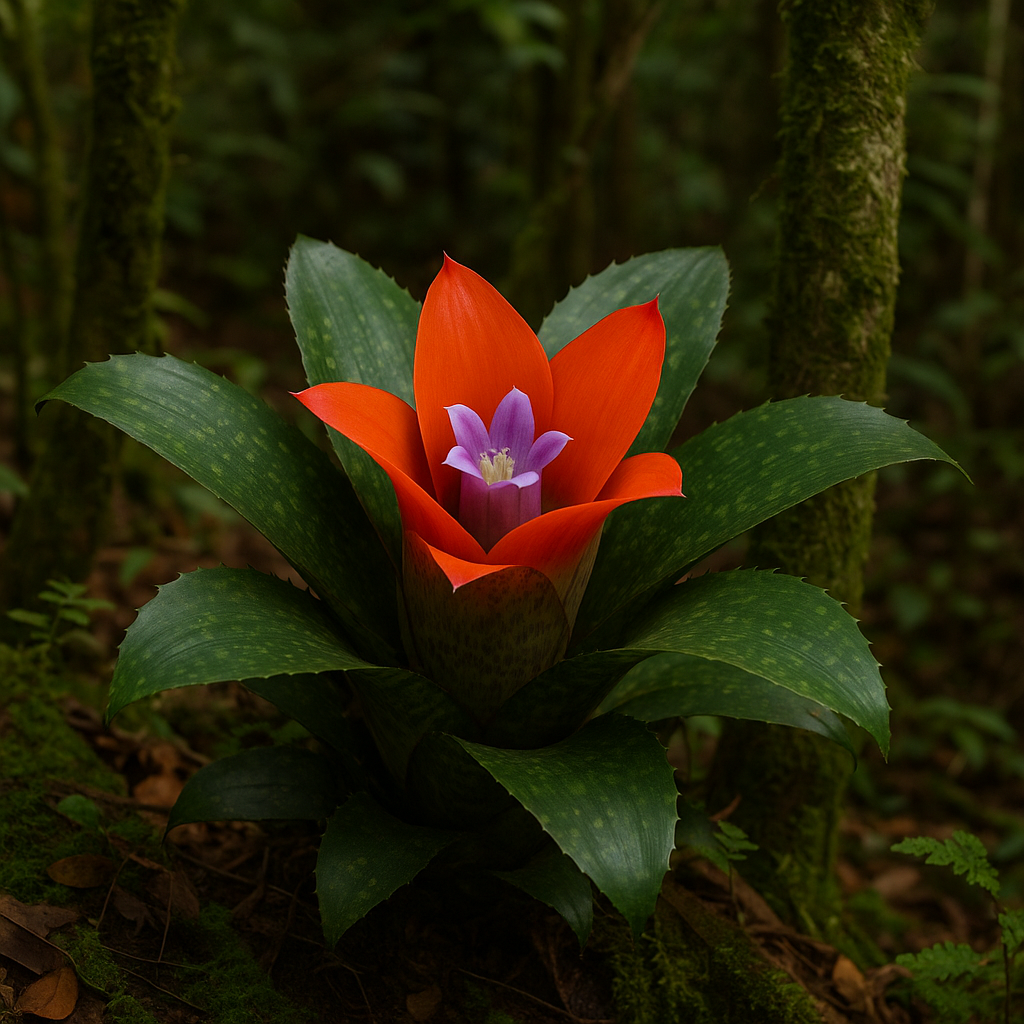The tropical forests of Brazil harbor one of the richest biodiversities on the planet. Among the many wonders that grow under the green canopy is a fascinating and little-known plant: the rare forest bromeliad, a true symbol of resilience, beauty, and uniqueness. In this article, we’ll explore the features, habitat, care, and ecological importance of this exuberant plant.
What are bromeliads?
Bromeliads belong to the Bromeliaceae family, with over 3,000 known species, most of them native to the Americas. They are recognized for their rosette-shaped leaves, often forming a “cup” in the center that collects rainwater. Some species are terrestrial, but many are epiphytes, meaning they grow on trees without extracting nutrients from them.
The rare forest bromeliad
Among the many species, some stand out due to their rarity. One example is the Canistrum aurantiacum, a bromeliad native to the Brazilian Atlantic Forest and considered extremely rare. Found only in specific areas of humid forest, this plant captivates with its vibrant orange bracts and delicate inner flowers, often lilac or white.
Another remarkable rare bromeliad is Vriesea gigantea var. seideliana, which grows in shady, humid forests of southeastern Brazil. With broad leaves and a marbled pattern, it is highly prized by collectors and conservationists.
Habitat and distribution
These bromeliads grow in hard-to-reach regions, such as steep slopes, treetops, or humid ravines. As a result, they are rarely seen by those outside the scientific community. They rely heavily on the forest’s humid microclimate, making them extremely sensitive to habitat destruction.
Deforestation and urban expansion have placed these species at risk. Many are now listed as vulnerable or endangered.
Striking characteristics
Rare forest bromeliads are notable for several unique traits:
- Vibrant colors: ranging from red and orange to purple or dark green with unique patterns.
- Imposing size: some species can grow over 1 meter in diameter.
- Water retention: their leaves form natural reservoirs that host insects, amphibians, and entire micro-ecosystems.
- Singular flowering cycle: many bloom only once in their lifetime, after several years of growth.
Ecological importance
The rare bromeliad is not just a natural ornament—it plays a vital role in the ecosystem. Its water-holding cups serve as shelter and nurseries for countless species. Some frogs, for instance, depend exclusively on these bromeliads to complete their life cycle.
Additionally, they are a food source for pollinating insects like bees and hummingbirds, contributing to the overall health of the forest.
Cultivation and conservation
Growing a rare forest bromeliad requires patience and responsibility. First and foremost, avoid collecting specimens from the wild. If you want a rare plant, look for certified and legal producers.
They can be cultivated in hanging pots or mounted on trees in shaded gardens, as long as there is constant humidity, partial shade, and good airflow. A specific substrate for epiphytes is recommended, made of coconut fiber, pine bark, and charcoal.
Water should be added directly into the center cup of the plant, and refreshed regularly to avoid mosquito larvae buildup.
Curiosities
- Some rare bromeliads can take up to 10 years to bloom.
- Certain species are only pollinated by specific bats or hummingbirds.
- Studies show that a single bromeliad can host over 50 species of insects.
Preservation is crucial
The survival of rare forest bromeliads depends on the preservation of their natural habitat. Supporting reforestation projects, avoiding illegal plant trade, and spreading awareness are key steps to ensuring these species don’t disappear.
The rare forest bromeliad is more than just a beautiful plant – it is a reflection of Brazil’s natural wealth and the delicate balance that sustains our ecosystems. Learning about and protecting it is a responsibility we all share.


